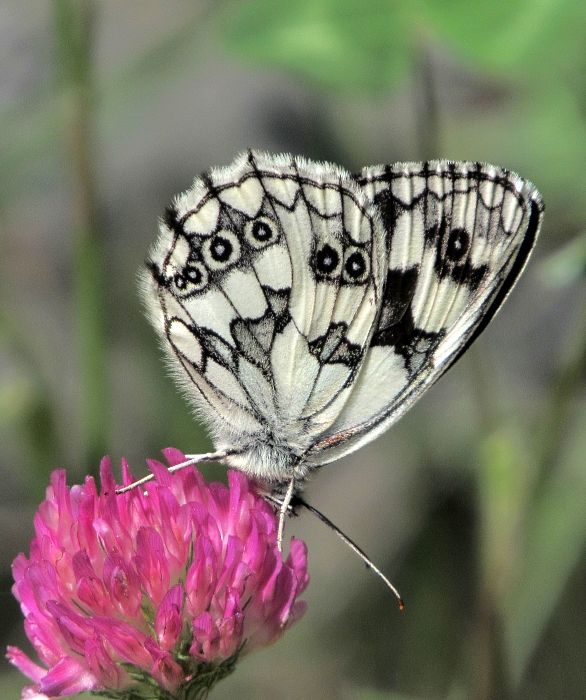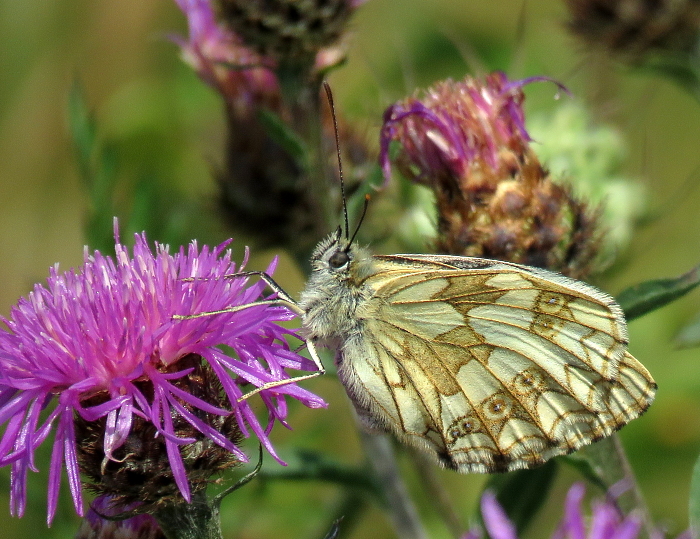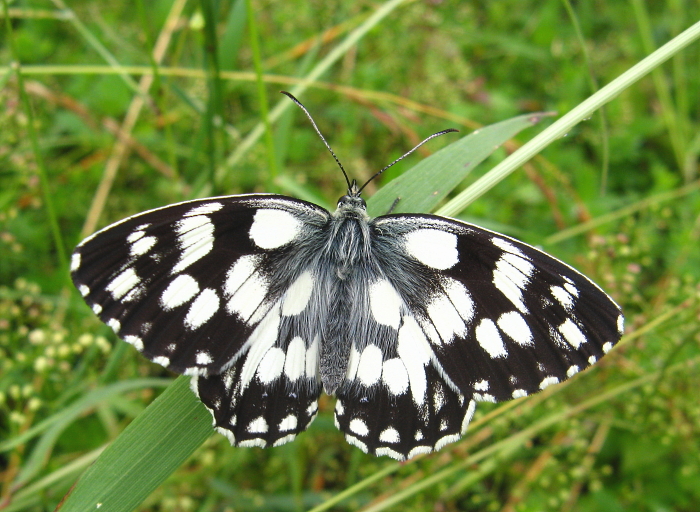
Male, Switzerland, May 2017

Male, Switzerland, July 2012

Male, Suffolk, UK, June 2020

Male, Suffolk, UK, June 2020

Female, Suffolk, UK, June 2020

Female, Switzerland, July 2019

Male, Suffolk, UK, June 2020
Refresh page if pictures don't load fully:









Form leucomelas, Provence, July 2004

Final instar caterpillar, Switzerland, May 2014

Final instar caterpillar, Switzerland, May 2014

Distribution
The most widespread and
common of the
marbled whites, this is a familiar butterfly of summer grasslands
throughout most of Europe. Throughout my life, it had been notably
absent from East Anglia in the UK until the last few years, when an
introduced colony in Ipswich in Suffolk became firmly established. It
remains to be seen if the species will spread to other parts of the
county. In Switzerland, the first butterflies are on the wing at the
end of May - though June is the real start month - and the last at the
end of July or the beginning of August. It is predominantly
single-brooded everywhere, though partial second broods have been
recorded.
Both sexes are black-and-white chess boards above, with a single, solid
and strong mark at the end of the cell and no bar across the cell. This
distinguishes it from most other European marbled whites. The Iberian
marbled white, formerly considered a subspecies of the marbled white,
also lacks a cell bar and is the most similar species overall. It is
much less strongly marked, however, with little black at the base of
the forewings and no black decoration towards the base of the hindwing.
Beneath, the marbled white is also easily distinguished from other Melanargia
species (except the Iberian marbled white) by the discal band, which is
broken at the end of the cell. The Iberian marbled white is paler
beneath but otherwise similar. Male marbled whites are etched in grey
and black on white on the underside, while females sport various shades
of buff, making the sexes easy to separate. An occasional form, leucomelas, has an
entirely white underside hindwing.
The marbled white is a grass
feeder, using
a variety of species from various genera - including many common
grasses. It hibernates as a caterpillar. Mature caterpillars may be
seen in May, looking for suitable places to pupate.